St. Oswald's Church, Methley
OS grid reference:-
St. Oswald's at Methley to the south east of Leeds, is a Grade 1 listed Church which dates back to the fourteenth century. The building contains famous tombs and has links with the Tudors, The Wars of the Roses and the Battle of Towton.

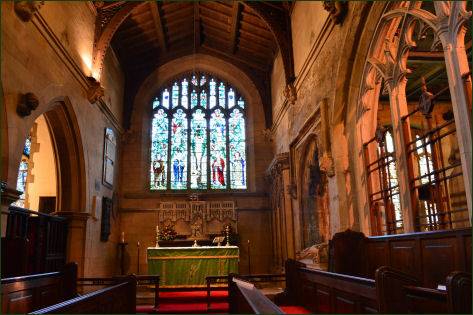
Lionel de Welles, 6th Baron Welles, (c.1406 - 29 March 1461) is interred in the church, he was killed fighting on the Lancastrian side at the Battle of Towton, fought in a snowstorm on 29 March 1461 it was one of the bloodiest battles ever fought on English soil. Welles also fought for Lancaster at the battle of Mortimer's Cross, and the 2nd Battle of St Albans. By his second marriage to Margaret Beauchamp, Baron Welles became the step father of Lady Margaret Beaufort, the mother of Henry VII. The alabaster tomb of Welles and his wife Jane, heiress of Robert Waterton, is located beneath the window in the south wall of the Waterton Chapel.
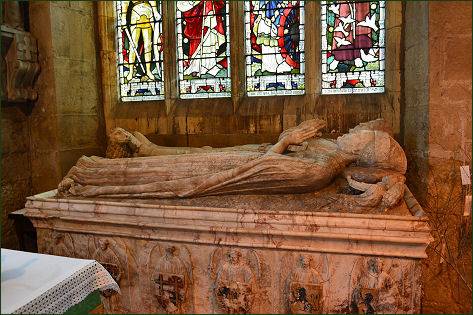
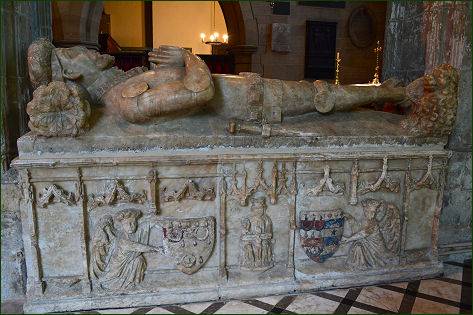
Lord Welles is clad in armour, his head rests on his helmet, his feet upon a lion.. He wears a chain round his neck, a belt with jewels and the garter with its motto on his left leg. Over his armour is a surcoat with the arms of the Welles family. On the left of Lord Welles is his wife, her head, with mitred headdress, is richly dressed, resting upon a cushion supported by angels. She wears a mantle embroidered with the arms of the Welles family, at her feet are two small dogs. The tomb bears the arms of Waterton, Welles and Willoughby families. Baron Welles body was brought to Methley in a sack after the Battle of Towton to prevent his remains from being mutilated by his Yorkist enemies.
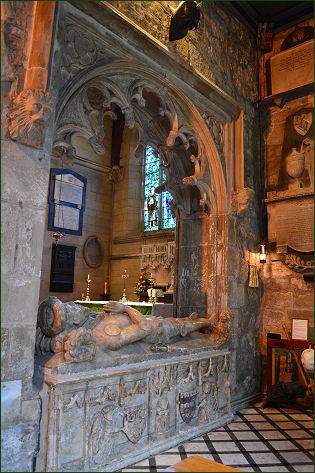

Between the chancel and chapel is a beautiful canopied altar tomb of alabaster bears the recumbent figures of Robert Waterton and his wife Cecily, their hands together as if in prayer. Robert Waterton is dressed in plate armour, his feet rest upon a lion, and his head resting upon his helmet, which bears a plume of feathers. A chain is round his neck and round his waist is a richly-jewelled belt from which hangs a dagger.His wife is dressed in a long, loose garment, her richly dressed head resting upon a cushion supported by angels. Two pet dogs are at her feet. The tomb has five niches with arches. In the south/central is a figure - God the Father - and the arms of the Waterton and Fleming families.

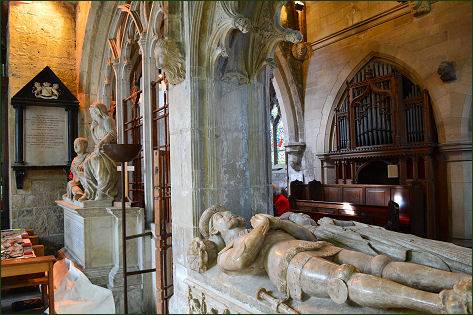
The Chapel contains other fine monuments to the Savile family. On the north side is a large monument by Peter Scheemakers with effigies of Charles Savile, semi-recumbent, who died 1741, and his wife Aletheia, who died in 1759, seated holding an open book. On the south wall is a large monument with semi-recumbent figure of John Savile, first Earl of Mexborough (died 1748), by the sculptor Wilton, and erected by his widow. There are murals to other members of the Savile family. Between the tombs of the Watertons and Welles, Dorothy, the third wife of John Savile and widow of Sir Martin Frobisher, is buried.
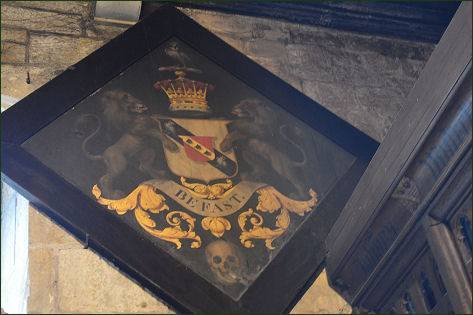
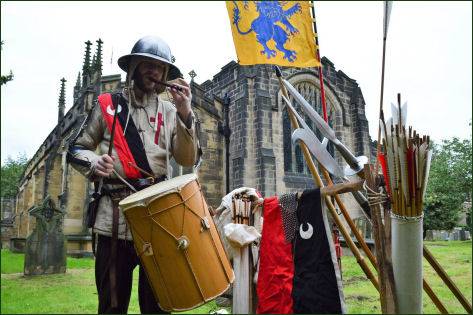
The ceiling is flat panelled and dates to fifteenth century, its timber framework is decorated with armorials and winged angels. The four-light east window contains some very old glass collected from various windows in the church. Some of the glass is fifteenth century. The figures depict, from left to right, St. George, Rachel, St. Katherine and St. Francis. The window was erected in 1901 in the memory of Rachel Katherine Walpole, Viscountess Pollington, who died on 21st June 1854.The oak altar table, together with cross and candlesticks and kneeling benches, were all designed by Robert Thompson, the famous "mouse man" of Kilburn.
The Church had a spire from the mid eighteenth century to 1937, when it became unsafe and was dismantled. The Castleford-born artist Henry Moore was a frequent visitor to the church.
Images courtesy of Paul Johnson
Abbeys and Churches of Yorkshire
